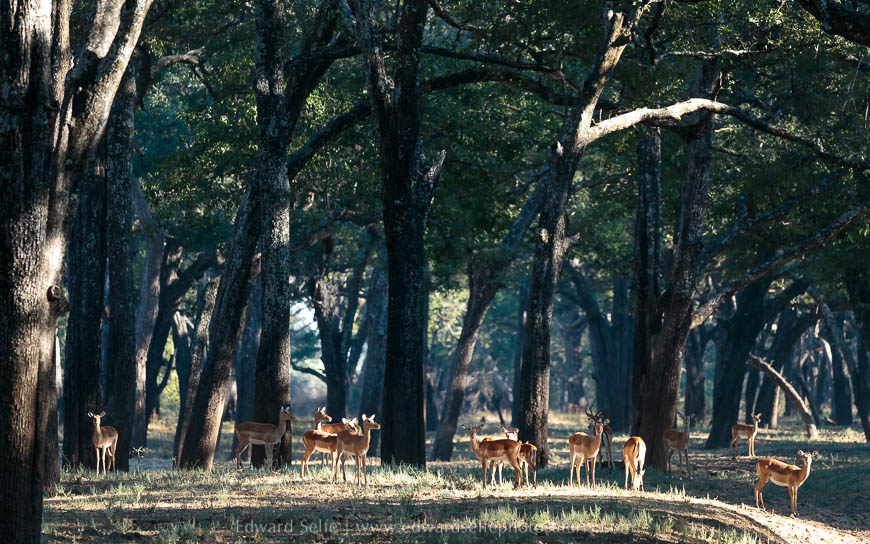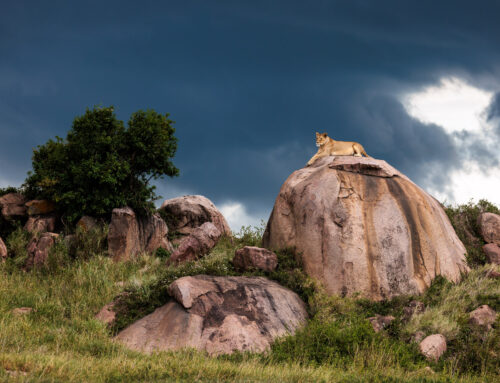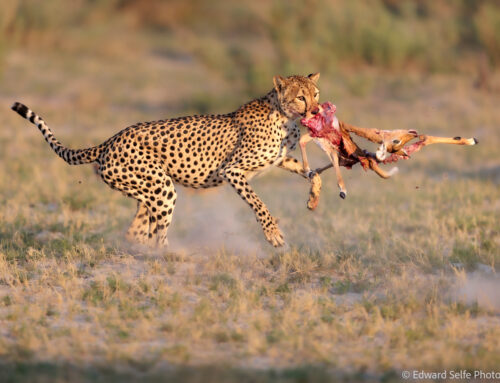I have just finished an 8-night safari shared between Zikomo Safari Camp in the remote Nsefu Sector and Lion Camp in the game-rich northern part of the park. Each area offers something special but the key selling point of both is lots of game and very few other vehicles sharing our sightings.
The group consisted of 4 guests who I had not guided before, but with whom I had been talking on emails for over a year. It was great to meet them finally and share good time in the wild with them. All had read extensively about Luangwa, and one had visited before, so their expectations were very high as we started the safari.
All my guests were experienced with their cameras so I really wanted to help them with advanced skills and techniques that they could use throughout the trip. So we spent the first afternoon — as is often the case — reading ourselves into the area, looking for tracks on the road, listening for alarm calls and learning where the game was moving. While we moved slowly through the area, we put into practice our discussions about differential light — where the subject and background are differently lit — and how to deal with that using the camera’s exposure compensation. We also spent time working in aperture mode discussing how to reach the “correct” balance of shutter speed and ISO to minimise noise but ensure sharp images in varying situations.
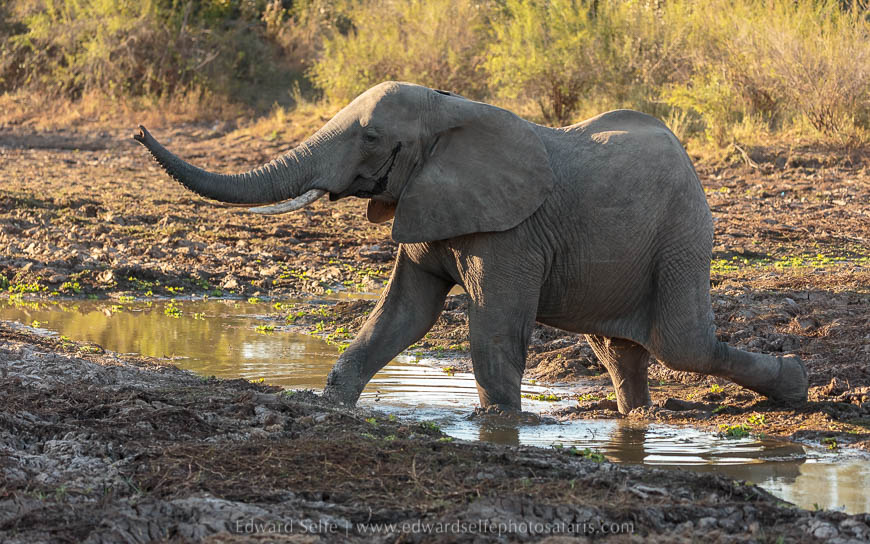
We travelled along the Kauluzi stream and spotted vultures in trees which led us to a dead buffalo. The carcass was across the stream where we couldn’t access but an old male lion was nearby and came for a drink in the stream.
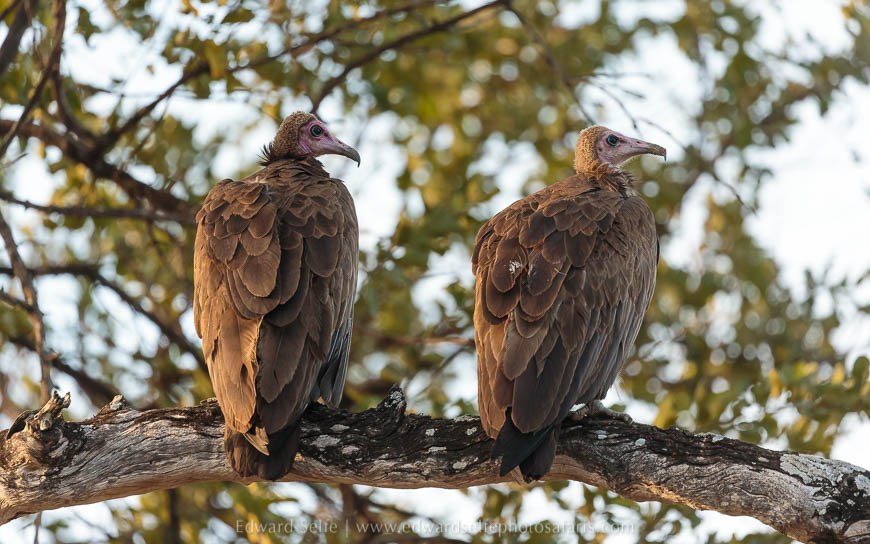
Stopping near a red-billed quelea roosting site — where millions of seed-eating birds sleep at night! — we heard baboon alarm calls nearby. After a quick drink and bathroom break (there are always convenient bushes!) we headed towards the commotion. There were 4 young males and 2 adult females patrolling through the bushes in search of an impala meal. They surrounded a herd and, in fact, they caught one as we heard the bellows from the impala and saw the rest of the pride rushing in, but it must have escaped as there was no sign of a kill when we slowly approached. A pretty exhilarating first afternoon!
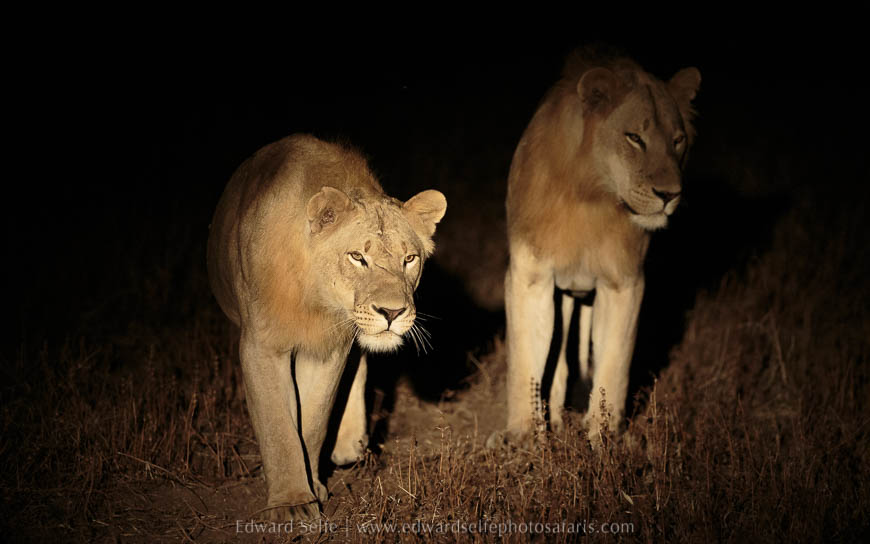
However, the following morning we found the pride on a very freshly killed buffalo carcass. In fact, they had not even started to feed when we arrived but over the following few hours we watched as they opened the body cavity and fed on the soft body parts inside.
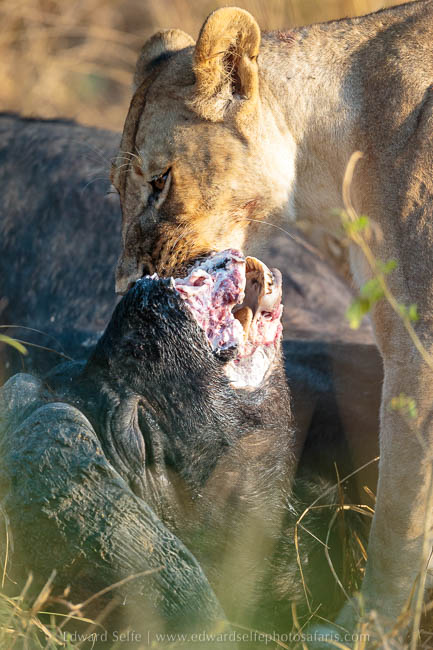
We spent the following day exploring areas which gave us lots of general game sightings, but the cats were elusive. Of course, after a great lion sighting, we were all set on finding a leopard next! After a day of birds, monkeys, elephants and stunning scenery, I checked a likely gulley where an impala was snorting and we picked up our first leopard sighting of the trip. She was heavy with milk, and not keen on being disturbed so we left her as she moved away through the bush.
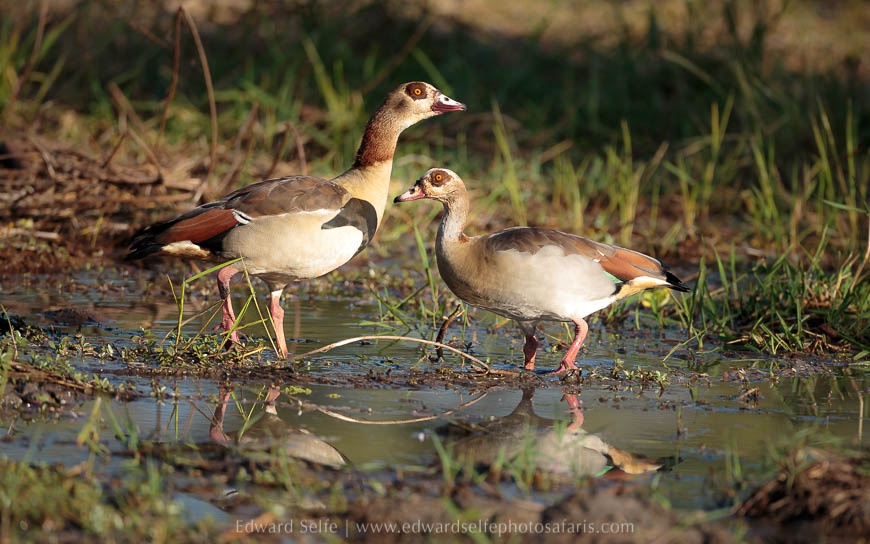
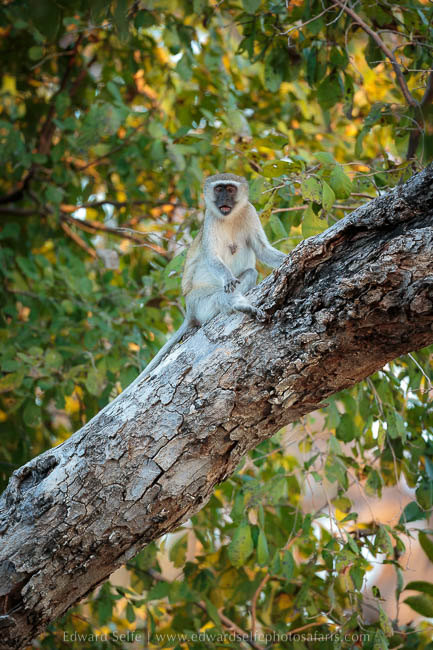
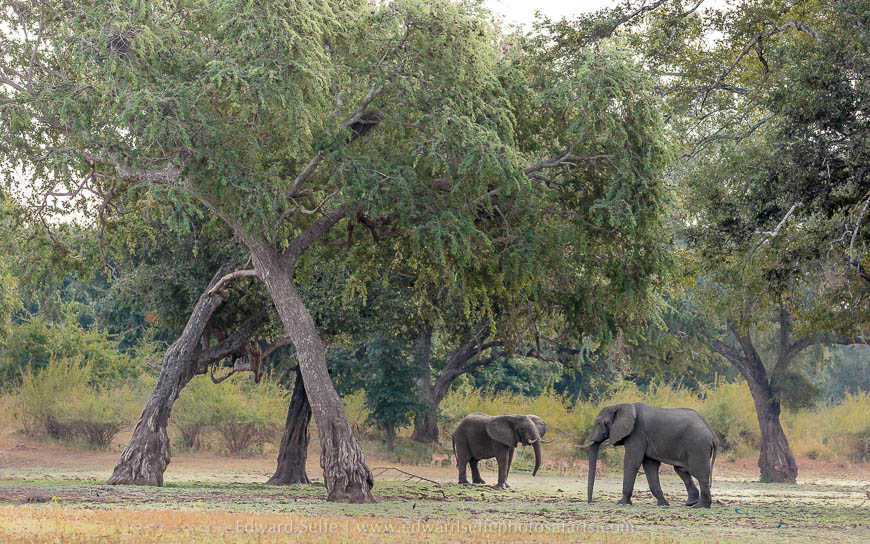
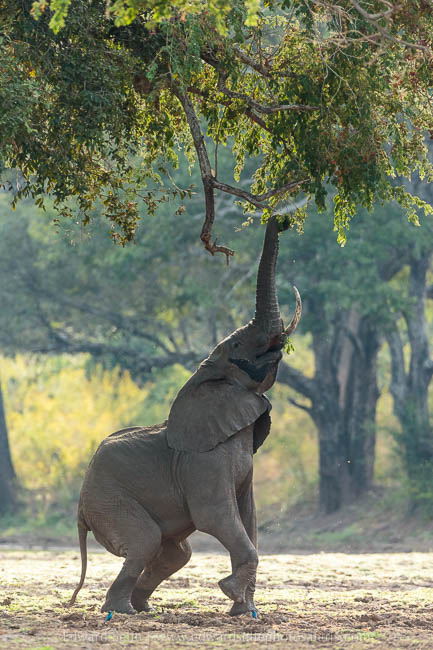
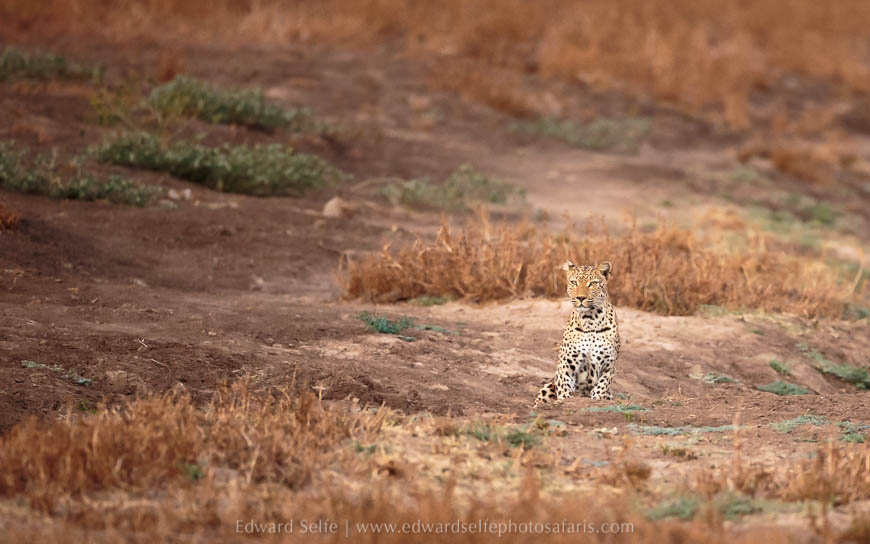
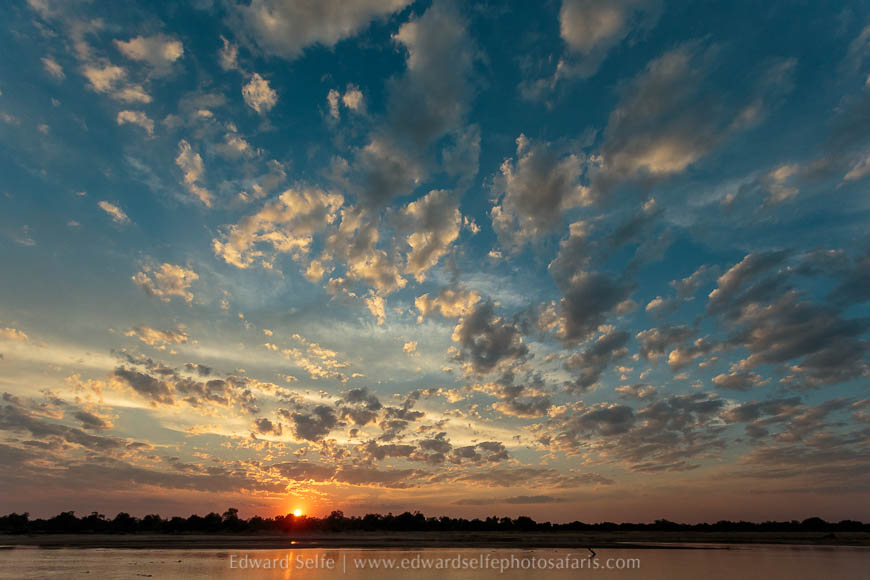
With our third full day, we opted to take a longer drive and stay out all day. Taking a packed lunch with us, we explored further north through the Nsefu Sector. I was keen to show my guests the incredible stork colony where thousands of yellow-billed storks rear their young in the rainy season when the area is flooded. The pan is dry now, and the young are fledged but there is still a huge cacophony of noise and plenty of activity there.
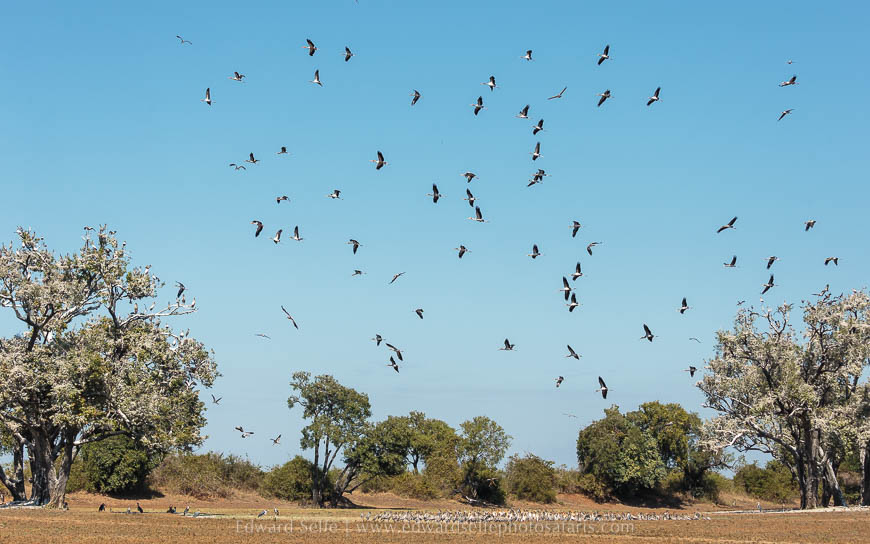
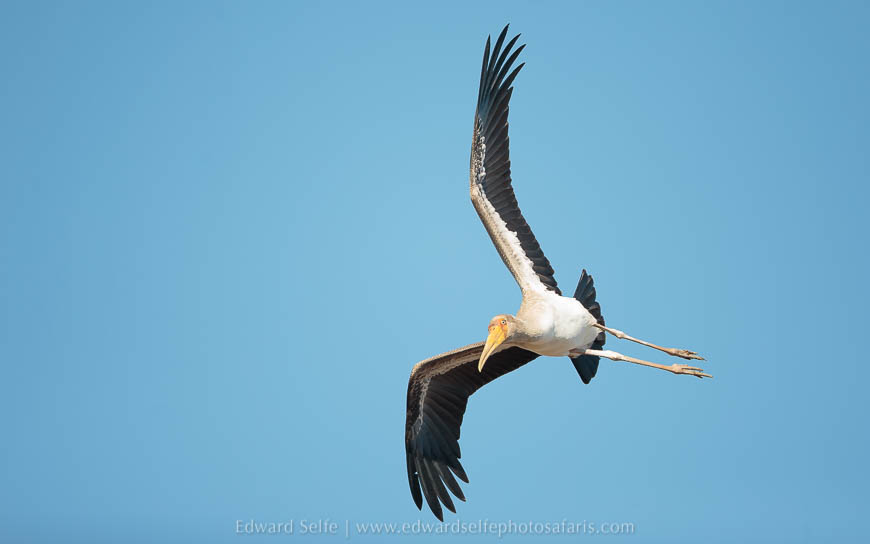
While watching the storks, we noticed that the impalas nearby were very twitchy. We had observed it on arrival, but their attention was focused on an area of ground which was covered in storks, so I had not wanted to explore more and disturb the birds. But when the birds moved off, we checked out the site and found a leopard who had killed a large male impala earlier in the morning. She was resting in the gully with her kill, feeding occasionally and frequently checking for danger or approaching scavengers. I was thrilled to find such a scene early in the day on an all day drive, knowing that we had the rest of the day to observe and follow up on any action. We waited until some cloud passed over, softening the light, and then took some great images of the leopard feeding on the carcass. We hoped she would try to drag it to safety, or go and get her cub, but she clearly decided that either option was more risky than staying where she was, at least until darkness fell.
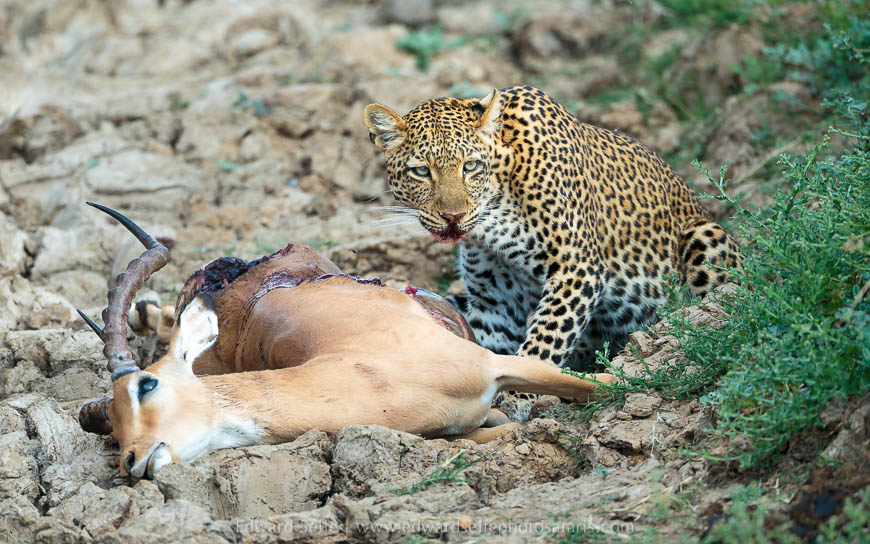
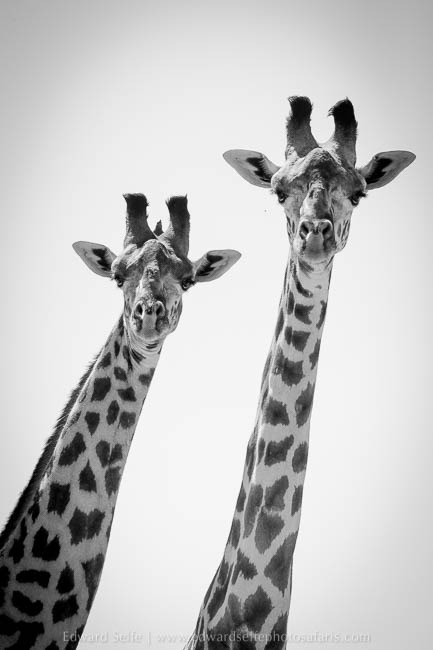
Perhaps the sighting of the week — certainly in terms of rarity — came in the afternoon while we were photographing puku in the soft light of late afternoon. I scoured around with my binoculars and saw the same martial eagle mantling over a kill that was hidden in the scrub. Assuming that it had killed a young stork, I chose an approach route and tried to get closer. We could not have hoped for a better situation. The eagle didn’t want to give up its prize to the waiting marabou storks, so didn’t move away as we approached, and the light and setting were ideal for photos. I have certainly never been so close to a martial eagle in any setting, let alone one that was so great for photos.
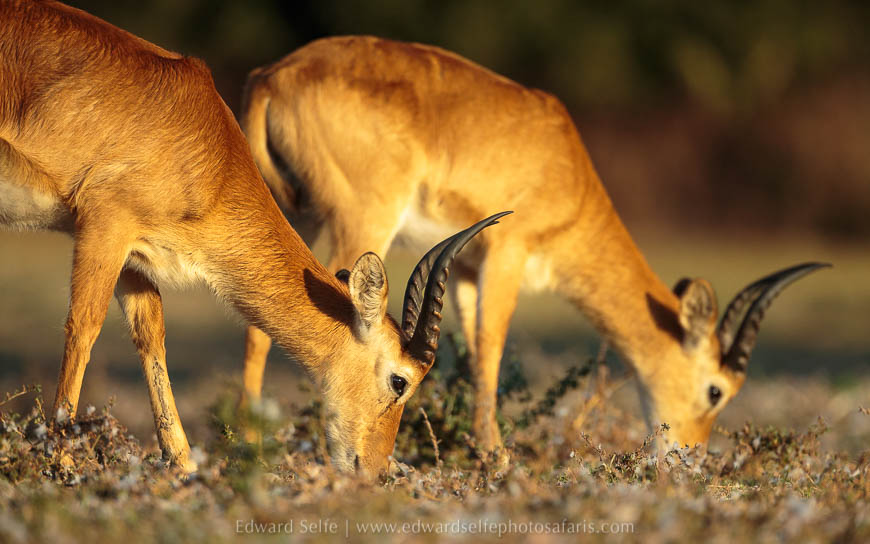
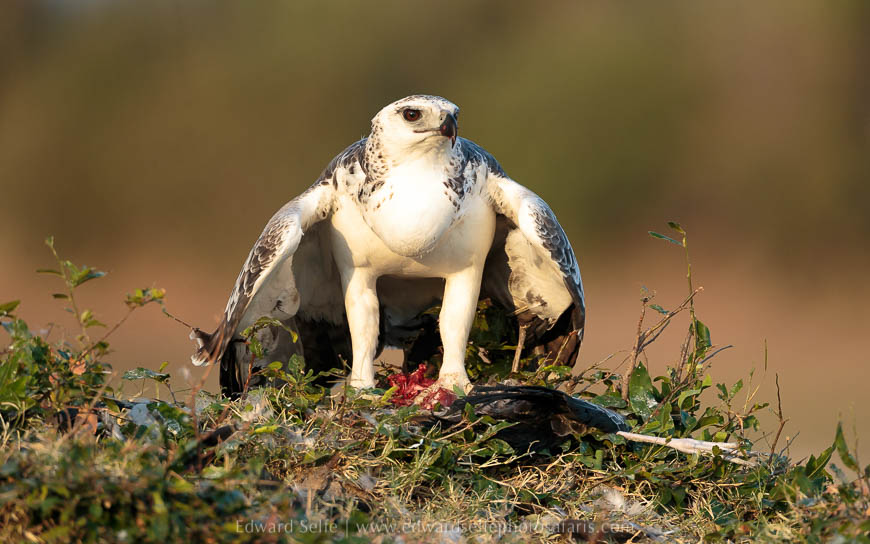
Our final morning in the Nsefu sector started as all good mornings on safari should….with a lion pride on the move! The small pride that had killed the buffalo were on the move again and in pursuit of another herd of buffalo. They didn’t persist with their hunt which was a shame as we were excited to watch the dynamics between the two impressive adversaries, but they did give us some amazing photos.
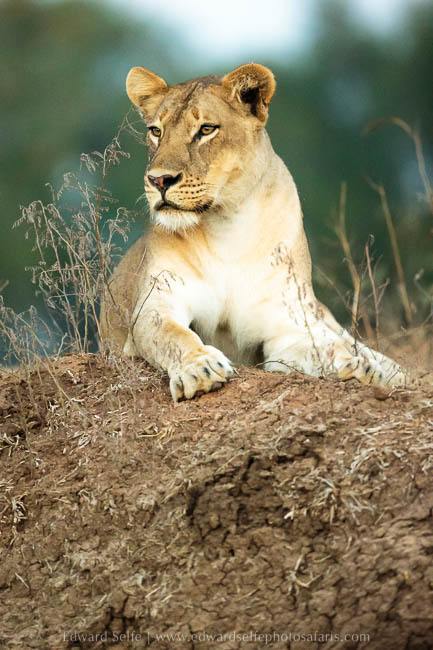
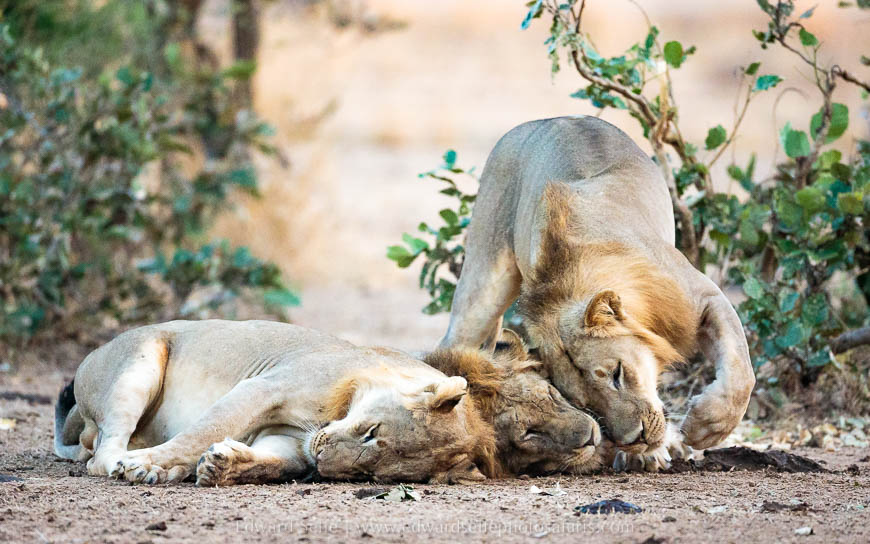
I always have a great feeling when I arrive at Lion Camp. It’s a stunning camp, overlooking a busy waterhole, and there is always a promise of excellent wildlife encounters. Added to this, the experience in the camp is superb, with rooms that are beautifully appointed, mealtimes that are flexible around guests’ needs and food that is perhaps the best available anywhere in Luangwa; it’s a pleasure to be there and I love to share the experience with guests.
Sure enough, our first outing from the lodge took us through the golden, grassy dambos around the camp, where we shot zebras through the long grass, played with the soft light on hunting bee-eaters, and ended the afternoon at a lagoon where elephants were heading to the trees for the night.
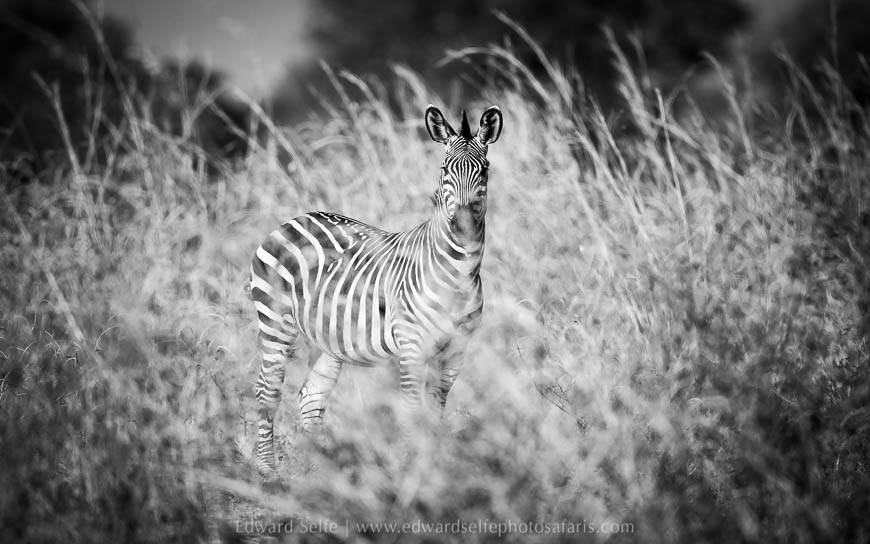
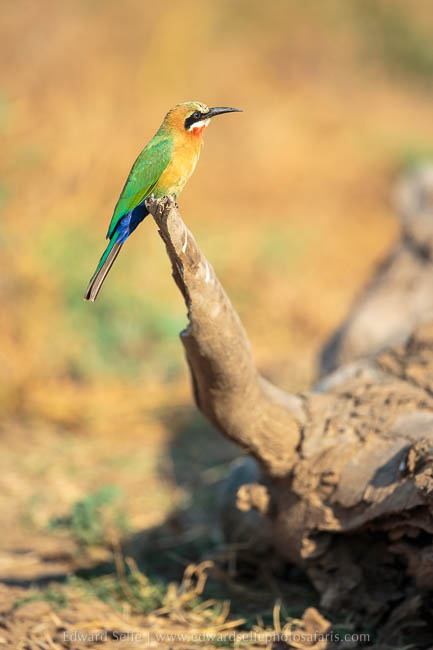
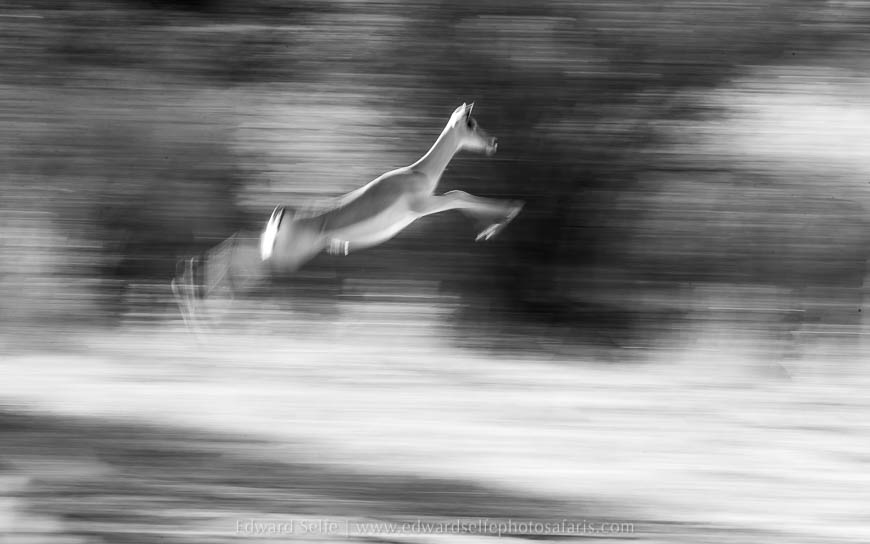
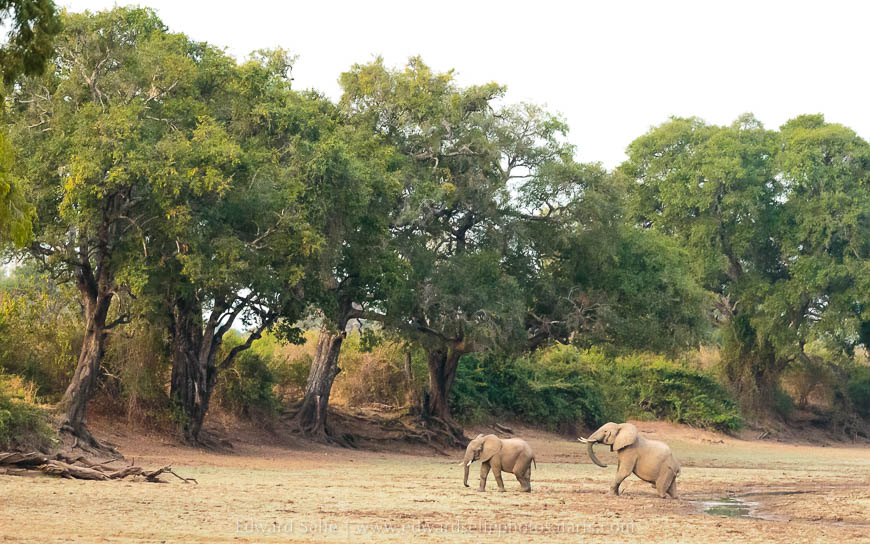
After dark, we spent nearly half an hour with a leopard which had killed a porcupine, watching as she expertly removed the quills and dropped them on the ground. Having seen the way some cats end up when faced with a porcupine, it was clear that this leopard had done this before!
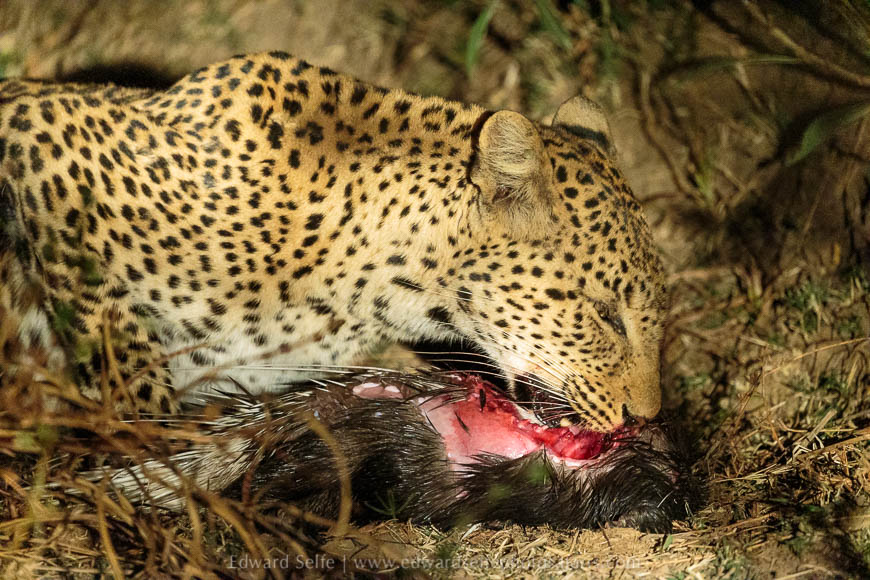
Lion Camp’s famous lions were giving us the run around, calling all night, and even being spotted passing the main deck of camp during dinner, but then melting into nothing by day. We went south to look for them one morning and came across a hideous scene; a hippo skirmish in the night had led to the death of a young male. Such was the extent of his injuries that he was totally covered in drying blood, from nose to tail. It appeared that a larger, dominant male had chased him from the river, attacked him and killed him with several punctures to the head and chest from his long canine teeth. These grievous injuries explained the copious quantities of blood.
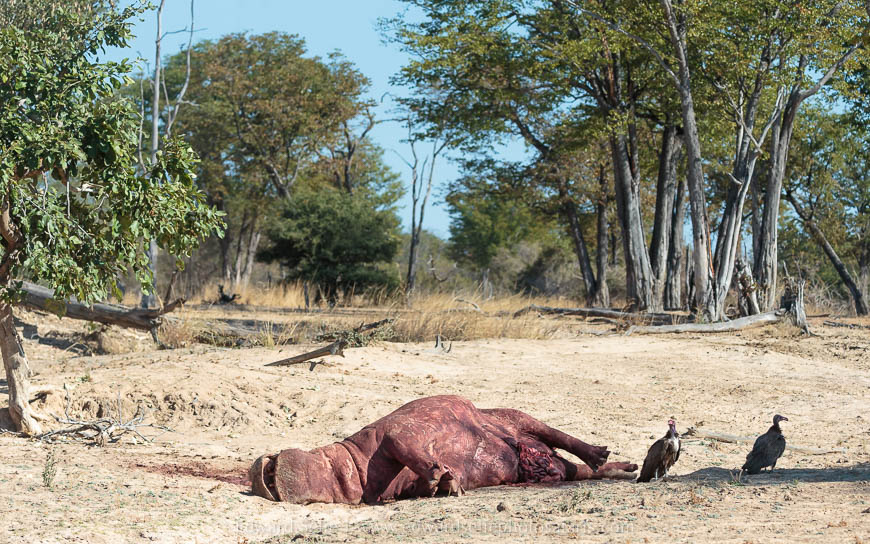
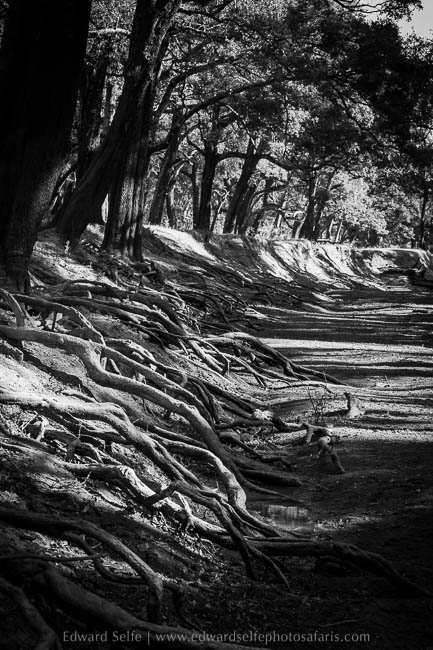
Where one animals perishes, others will thrive, so we knew that vultures and hyaenas would be feasting in the afternoon. We left the carcass as the day started to get hot and returned, via Lion Plain, in the afternoon.
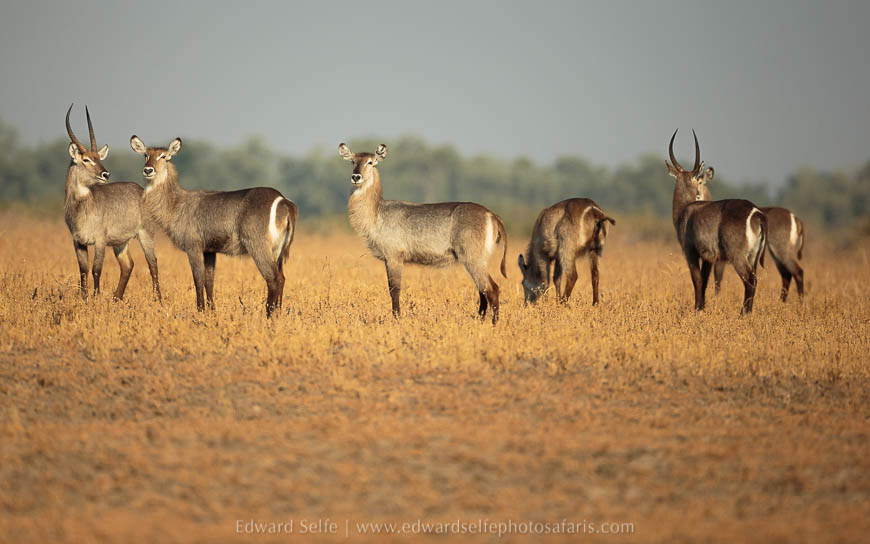
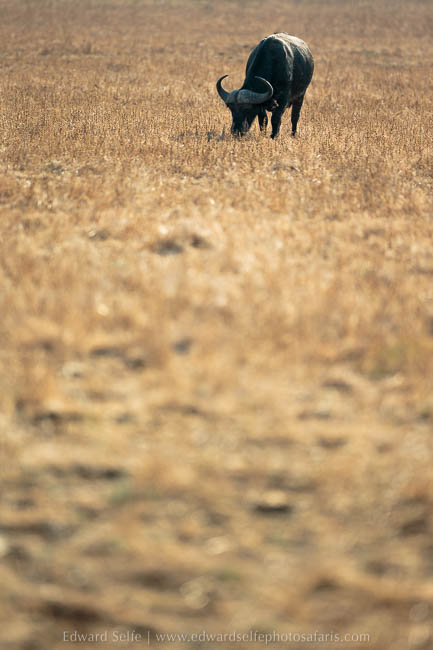
We returned to the carcass and found more vultures than we could have imagined. The noise, drama and competition was fierce between the white-backed vultures. The smaller hooded vultures waited on the sidelines, snatching at scraps as they became available.
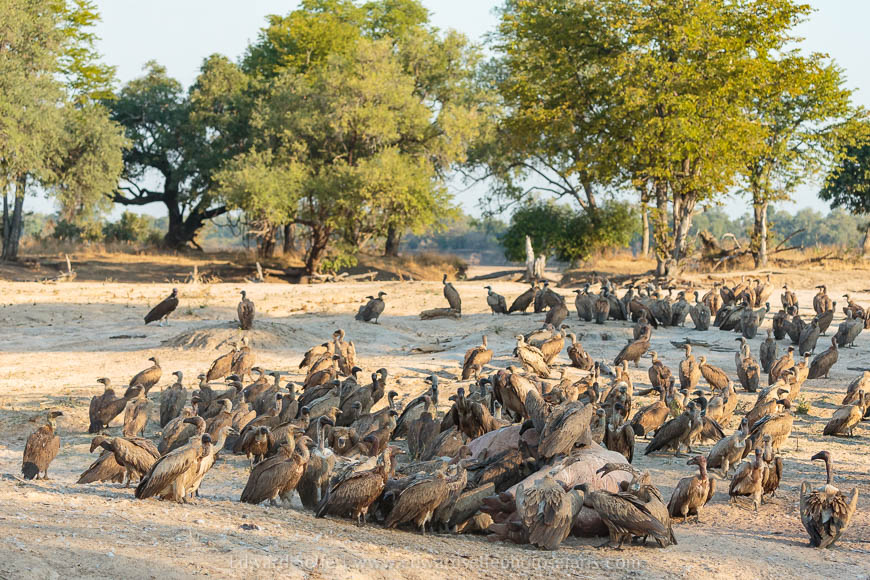
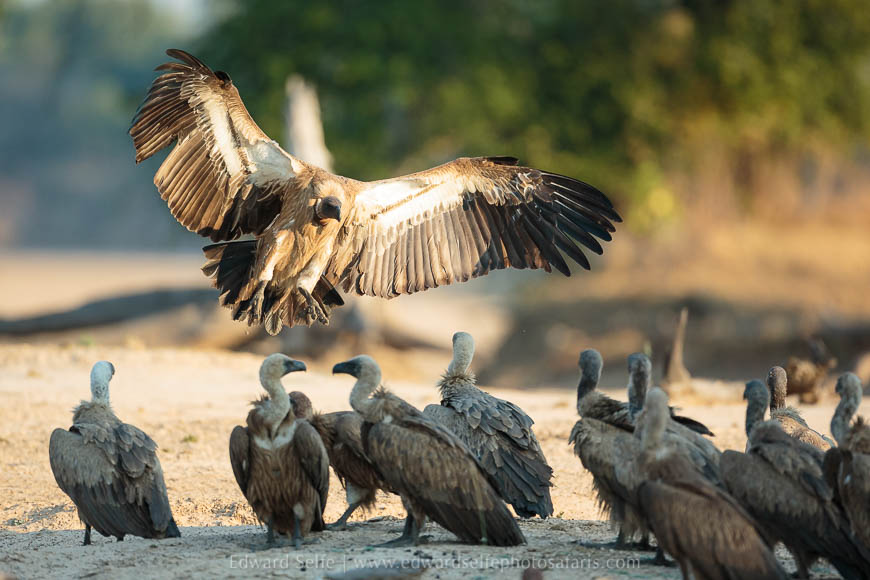
As the light dropped, we moved away, following alarm calls from puku and then a family of elephants that were moving past the dead hippo scene.
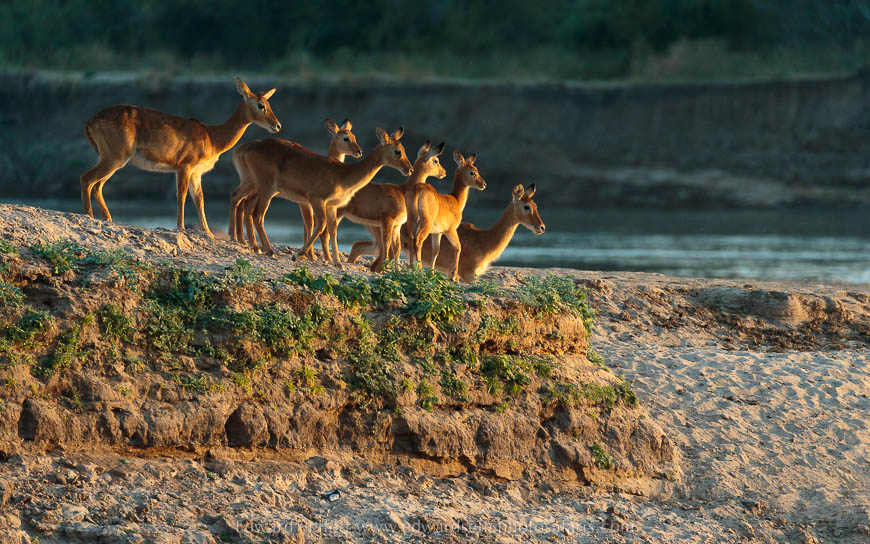
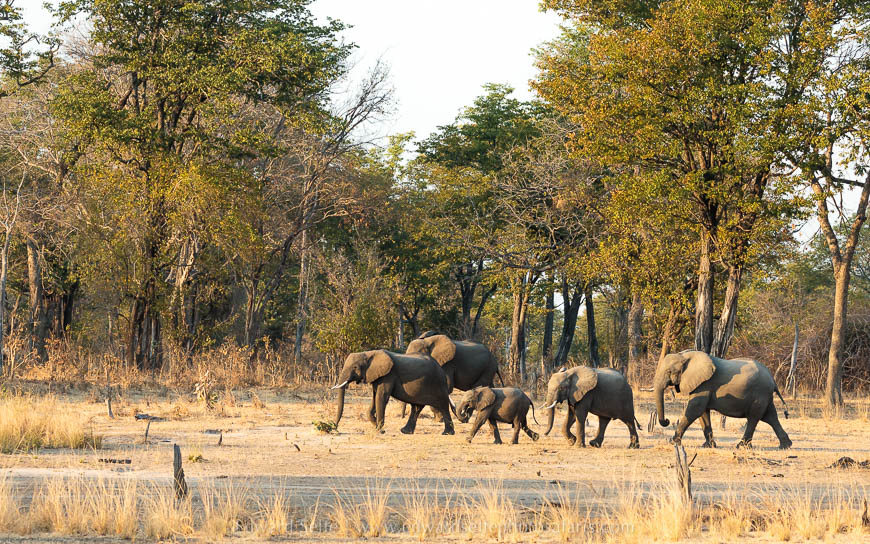
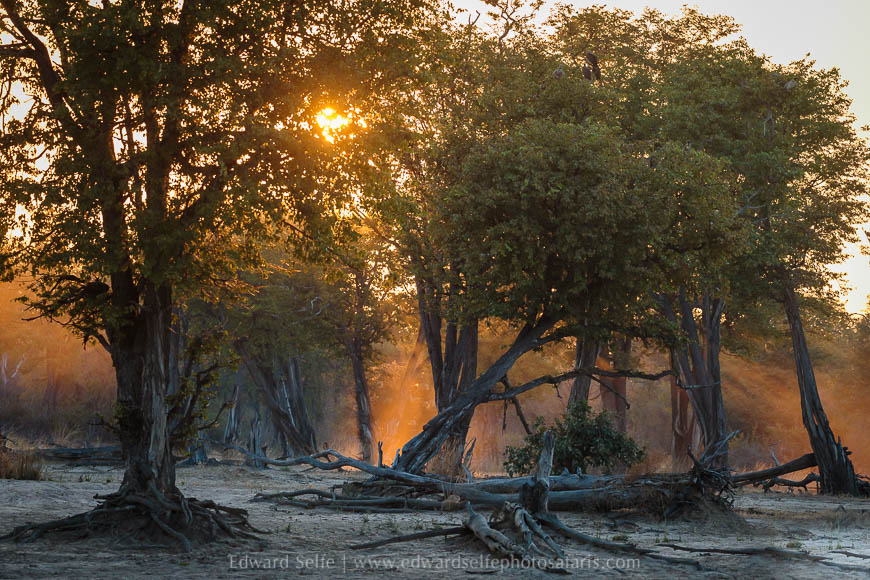
Finally the lions turned up the following day. The Hollywood pride were found with one new male who is boldly mating with the females with little regard for the presence of the 4 Nomad males who moved in last year. He will surely be overpowered if there is ever a challenge!
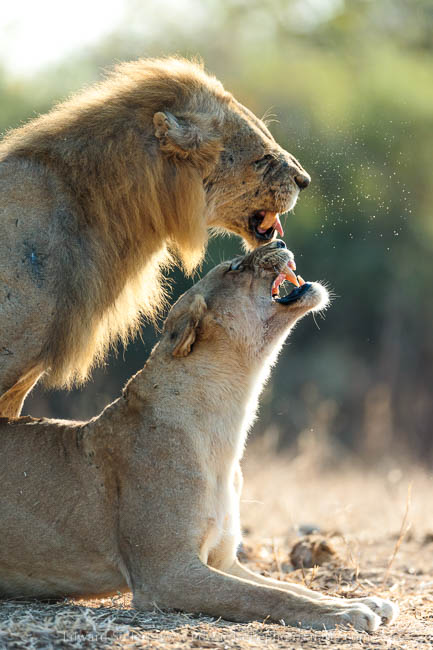
We decided to return to the hippo carcass on the final day, hoping to find lions feeding or perhaps more action from the hyaenas. The lions were not there, but 3 hyaenas were feeding on the bones and vultures were arguing over the scraps. Hundreds of replete vultures were resting on the ground nearby, too heavy to attempt flight unless absolutely necessary!
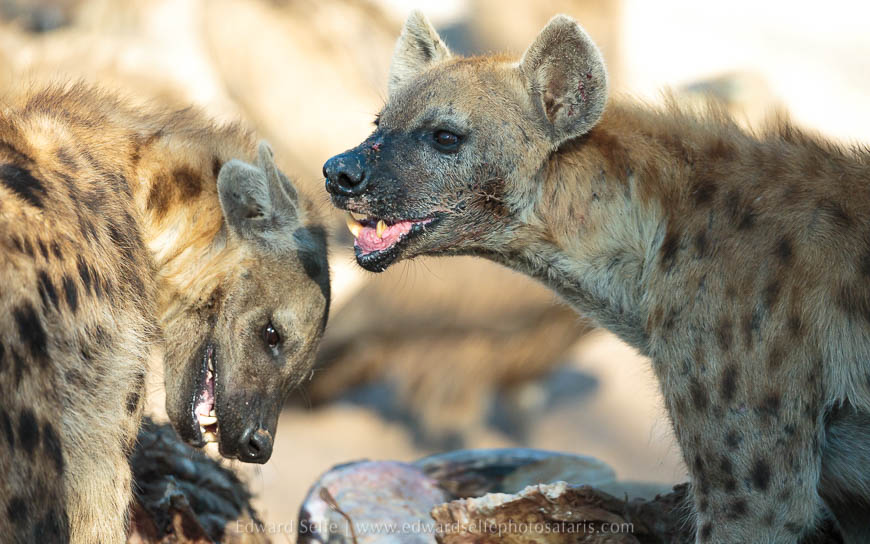
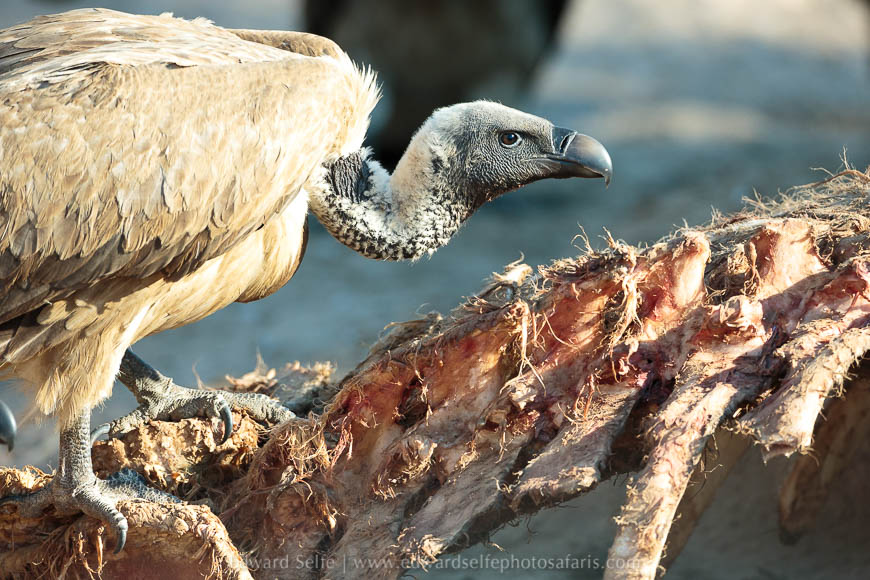
Our last evening was one of those truly incredible Luangwa events. We spent the best of the light with a beautiful herd of Cookson’s wildebeest. These are special creatures, unique to the Luangwa Valley and I was thrilled to get a great view of them. Leaving them, we came across two of the 4 Nomad males at a waterhole. They only roused at sunset but we were able to get great shots of them in the low light, resting our cameras on the custom camera supports. And then, without warning, a leopard called just 100m behind the lions; we could barely believe that the big cats would both appear for our last evening. A stunning large male leopard sauntered out of the thickets, observed the lions arrogantly, and melted into the night!
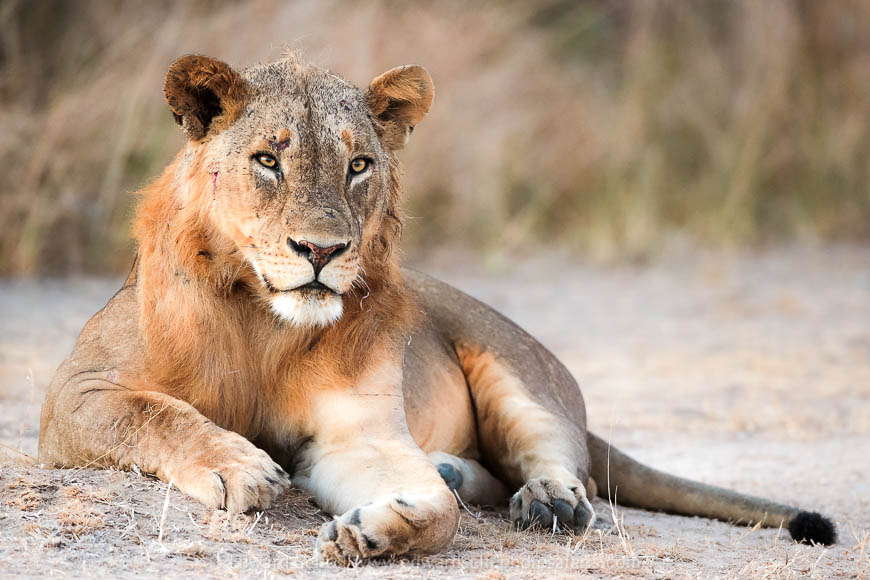
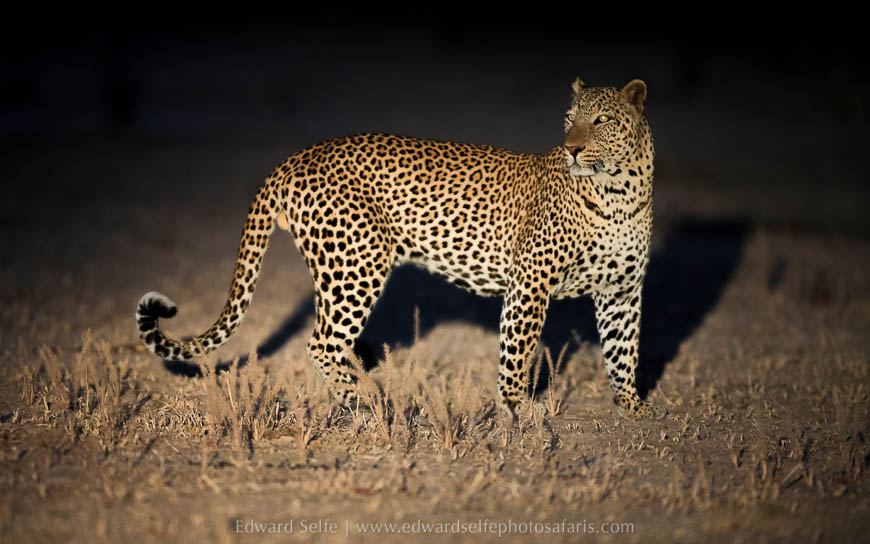
You can never guarantee sightings on any trip, but I have learned over 10 years of guiding here that every trip will have its highlights. They might come early on, or not until the end. But this trip had them spread throughout; lions killed a buffalo on our first morning; storks by the hundred entertained us at their colony while a leopard fed on an impala in a nearby gully; lions hunted buffalo again half way through the tour; a leopard de-quilled and ate a porcupine at Lion Camp; and we enjoyed stunning scenery in the Nsefu Sector and Lion Camp’s famous ebony groves. Give Luangwa a week of your travel diary and she will give you memories that you’ll cherish for years to come. Thank you to Ronnie, Ella, Leigh and Michael for a truly memorable experience.
